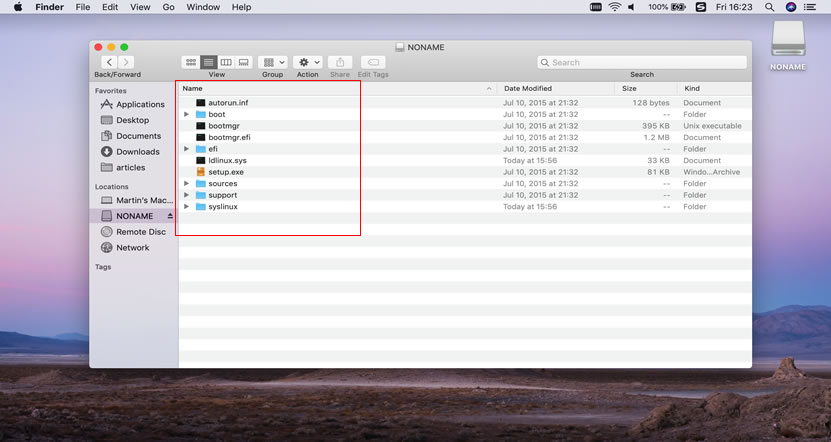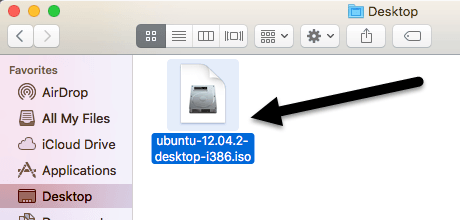
- #Burn iso file to usb for mac mac os#
- #Burn iso file to usb for mac 64 Bit#
- #Burn iso file to usb for mac iso#
- #Burn iso file to usb for mac download#
#Burn iso file to usb for mac iso#
Replace " /path/to" with your file folder your ISO image file located in. Step 6: Type in " sudo dd if = /path/to/your.iso of =/dev/rdisk2 bs=4k" command. (Replace "#" with "2" which is your USB drive number.) Step 5: Type in " diskutil unmountDisk/dev/disk#" command shown as below, then press "Enter" to unmount it. Here assume that the USB drive number is "2". Step 4: Take down the number of your USB drive. Step 3: Type in " diskutil list" command shown as below, then press "Enter" to list all the disks in your Mac computer.
#Burn iso file to usb for mac mac os#
(Click the "Spotlight" icon in the upper right corner on your Mac OS desktop and type "Terminal" in the search bar.

#Burn iso file to usb for mac download#
Have no any ISO image file? Download one immediately into your Mac. However, it is also easy and convenient to burn an ISO image to USB with "dd" command in Terminal on Mac. As we know, it is the most common method to use Disk Utility built-in to Mac OS to burn an ISO image file to disk. In Mac operating system, there are more than one method to create an image disk. Once the dd command finishes its process, you may see a dialogue box saying: The disk you inserted was not readable by this computer.Burn an ISO Image to USB in Terminal in Mac OS

Step 6: Complete the bootable USB drive process It will take a few minutes for the process to complete. Similar to Linux, you won’t see any asterisks or something to indicate that you have entered some keyboard input, but that’s the way Unix terminal behaves.Įven after you enter the password, you won’t see any immediate output and that’s normal. For me the command was like this: sudo dd if=~/Downloads/ of=/dev/rdisk2 bs=1mĪs we are running the above command with super user privileges (sudo), it will require you to enter the password. I hope you remember where you put the converted IMG file, in step 3. Here, we are using dd (copy and convert) to copy and convert input file (if) IMG to diskN. Use dd command in the following manner to create live USB: sudo dd if=/Path-to-IMG-DMG-file of=/dev/rdiskN bs=1m Therefore, do remember the correct device number of your USB drive or else you might end up corrupting Mac OS X. We shall be using dd command which is a very powerful and must be used with caution. Step 5: Creating the bootable USB drive of Ubuntu in Mac OS XĪnd finally we come to the final step of creating the bootable USB drive. The result should be: Unmount of all volumes on disk2 was successful.

So, in my case, the above command becomes: diskutil unmountDisk /dev/disk2 Where N is the device number for the USB you got previously. When you got the disk number, run the following command: diskutil unmountDisk /dev/diskN
:max_bytes(150000):strip_icc()/008_how-to-burn-an-iso-file-to-a-usb-drive-2619270-5c63768e46e0fb0001f255f3.jpg)
So for me, the command is like this: hdiutil convert -format UDRW -o ~/Downloads/ubuntu-14.10-desktop-amd64 ~/Downloads/ Normally the downloaded file should be in ~/Downloads directory. Open a terminal, either from Launchpad or from the Spotlight, and then use the following command to convert the ISO to IMG format: hdiutil convert -format UDRW -o ~/Path-to-IMG-file ~/Path-to-ISO-file This can be easily done using hdiutil command tool. The file you downloaded is in ISO format but we need it to be in IMG format. Ubuntu 14.04 is the latest LTS version, and this is what I would recommend to you.
#Burn iso file to usb for mac 64 Bit#
Since you are using a Macbook Air, I suggest you to download the 64 Bit version of whichever version you want. Jump to Ubuntu website to download your favorite Ubuntu desktop OS. Of course, you need to download ISO image of Ubuntu desktop. Of course hit the Partition button to format the USB drive. It will give you a warning message about formatting the USB drive. When all is set to go, just hit the Apply button.


 0 kommentar(er)
0 kommentar(er)
